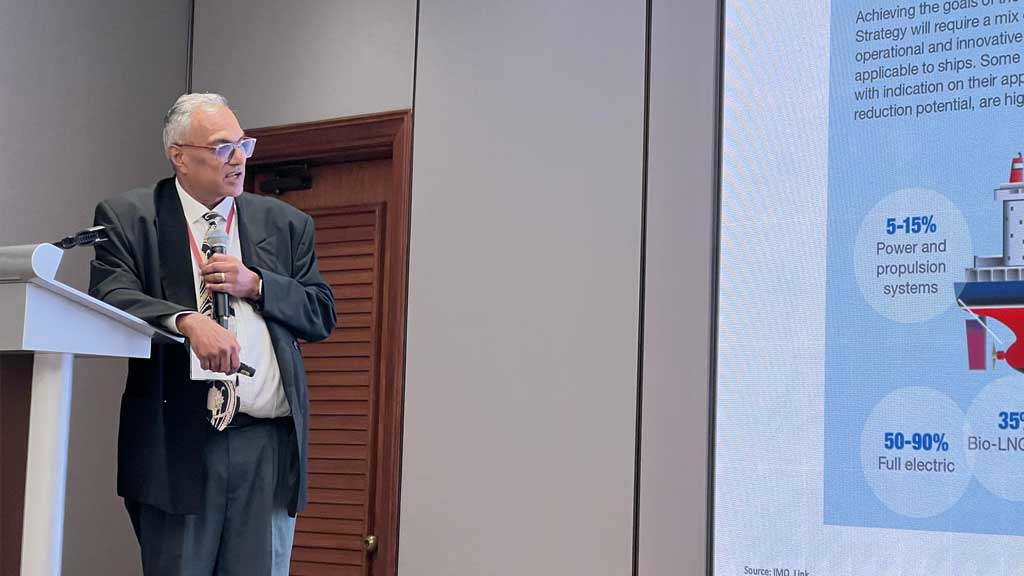
Electrified Transmission Fluids: It’s all about efficiency
Walter Bunting, director of OEM and CTS Driveline, Asia Pacific, at Afton Chemicals, has had an illustrious career in the automotive industry spanning 32 years. Bunting has substantial global experience, having spent 26 of those years outside the United Kingdom in culturally diverse areas. During his professional journey, Bunting has been involved in process development, formulating, marketing and OEM liaison. In 1999, Bunting secured bp’s inaugural global supply agreement with a Japanese OEM, a milestone in his lengthy career.
On October 30, 2023, Bunting delivered a webinar to ALIA members on eMobility Development Trends & EDF Development Approach for Better Efficiency which outlined the direction for future, more efficient, fluids. The online event was moderated by Paul Nai, regional business director for Lubrizol and current chair of ALIA’s Technology and Information Subcommittee.
Bunting’s address included a specific focus on China, where new energy vehicle (NEV) sales are rising rapidly as the Asian nation transitions from conventional internal combustion engines (ICE) to hybrid and battery electric technology.
Fuel economy continues to be the preeminent driver for all OEMs, says Bunting, which is encouraging greater hybridisation. If you’re not hybridised in 2030 at two litres per 100 kilometres, you are almost certainly going to need very specialised technology, he says. The most popular hybrid transmissions moving forward are likely to be the stepped Automatic Transmission (AT) hybrid, says Bunting.
Electric vehicles (EVs) have relatively simple transmissions – either reduction gears or 1-2 speeds. However, the question is how to deliver this. Is it a “dog clutch” for the multi-speed or is it an ATF friction type? Bunting also emphasised the severity of new transmissions towards lubricants in terms of torque, capacity, temperature, and the impact of new materials through hybridisation and electrification.
Even though the EV transmission is a “fairly simplistic” design, there are diversifying demands on the fluids, says Bunting. The increasingly popular wet eAxle combines the electric motor, power electronics, reduction gears and differentials into one compact unit. This has knock-on impacts relating to heat dissipation. Electrified Transmission Fluids (ETFs) need increased cooling power to stabilise motor operational temperature and maintain constant power and torque output, he says.
Bunting discussed several key development trends for eDrive applications in China, including the need to address electric motor noise vibration and harshness (NVH) due to the absence of the vibration of the (ICE) engine. Reliability and durability requirements remain; and downsizing, lightweighting and cost-reduction trends have considerable implications for fluids. EVs tend to be extremely heavy, due to the battery pack, so anywhere you can save weight is an advantage, says Bunting.
OEMs are likely to address these issues through smaller motors that operate at higher speeds. This requires more gears to allow a smaller (weaker) electric motor to run a vehicle at reasonable speeds. Rotational speeds of up to 50,000 revolutions per minute (rpm) are being explored in Japan. Even at 20,000 rpm, engine speeds far exceed that of an ICE, says Bunting. Increased rotational speeds have an impact on aeration foam and the physical aspects of the fluid.
With gear shifting, you will have efficiency and churning losses, says Bunting. Lower fluid viscosity could significantly reduce fluid churning loss to boost efficiency in an eAxle system with high rotation. However, protection provided by ETFs against excessive pressure and wear performances on gears and bearings may be compromised by a thinner fluid coating. Bunting noted that strong additive technology is required to offer adequate hardware protections. NVH tends to push you towards thicker lubricants to cut down the noise and vibration, whereas efficiency requirements encourage thinner lubricants. It is a balancing act, he says.
Efficiency is going to be the most important focus for ETFs going forward, says Bunting. How can you ensure the best performance, lowest friction and optimal thermal protection? Rather than the traditional focus on miles per gallon or litres of fuel per 100 km, you’re now going to be looking at kilowatts per kilometre. Efficiency is going to replace fuel economy for all OEMs, says Bunting. How can you make my car, my bus or my truck go further per kilowatt of electricity?
In the past, there has been a significant focus on copper corrosion and copper appearance in EVs. A lot of industry tests involve immersing copper strips in oil to determine the impacts. Bunting suggested such tests hold little relevance in an electric motor in a gearbox. Copper is usually supplied with a polymer coating—providing material protection and negating corrosion. When you look at lubricants and electric motors it is the interaction between the lubricant and the coating that is of primary importance.
With such rapid changes underway, several industry groups are working to help the industry move forward together. At present, we have a fragmented market with very fragmented demands, says Bunting. Requirements are driven by OEMs and their organisational desires, and there doesn’t appear to be any sort of standardisation, he says. Many industry bodies are developing specifications to harmonise efforts, but there has been no real progress at this stage, suggests Bunting.
Bunting emphasised eight important performance characteristics for new electric drive fluid design, including material compatibility, electrical properties, mechanical protection, foam and aeration, cooling performance, efficiency, sustainability and friction. Fluid viscosity, traction coefficient and thermal property all have a significant impact on eAxle efficiency.
To gain further insights into these development trends you can watch the full ALIA webinar in the members’ area of the ALIA website.



